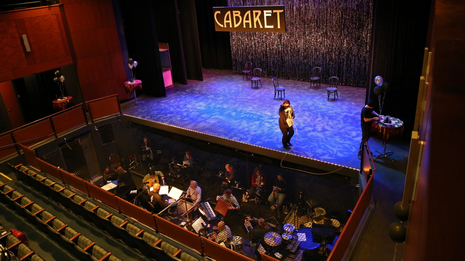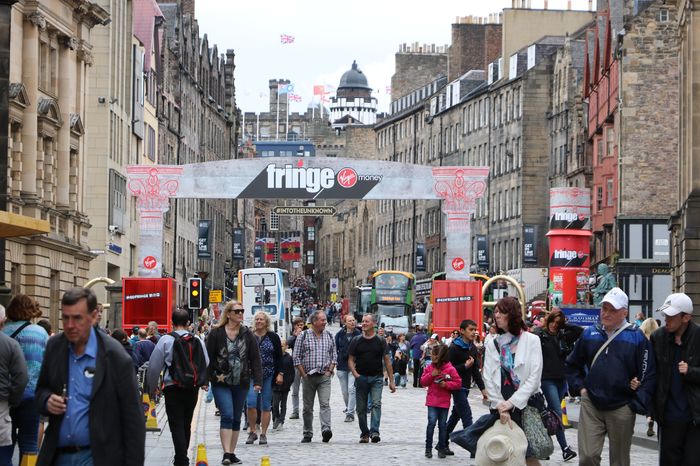Music in Theatre Post-Lockdown: The threat to the return of orchestras
As the theatre world grapples with social distancing rules, Nell Burnham speaks to guitarist Matthew Burgass about what this ‘new normal’ might mean for pit orchestras and bands

Live music is a crucial part of theatre. Consider three versions of the Rodgers and Hammerstein classic, The Sound of Music – one employing a full orchestra, one employing a reduced number of instruments, and one making use of pre-recorded music. The first will, no doubt, create the most affecting experience for audiences. Rodgers wrote his original score in 21 parts, and subsequent reduced scores are in no way able to give the same effect.
And what of the third option? A pre-recorded accompaniment may appear to be an acceptable alternative, but when an actor misses his or her cue (as even professionals are sometimes wont to do) the playback will grimly carry on, where a good MD would cover the mishap. Pre-recorded music also makes the vamps and safeties littered through musical theatre scores to underscore dialogue difficult or impossible.
“The loss of live music from our theatres is a disturbing thought”
Despite the centrality of orchestral accompaniment to theatrical production, musicians are often concealed from audiences in “pits” immediately in front of the stage, or similarly cramped quarters immediately behind. This is ordinarily not a pressing issue, as long as enough space to play is given. But under social distancing rules, orchestra pits cannot hold the full complement of musicians (even if the prescribed distance is only one metre rather than two).
Outside of the context of theatre, other orchestras, such as the London Symphony Orchestra, can facilitate all players returning to the stage. The LSO in particular is also making use of clear screens to prevent transmission during rehearsals, another precaution which is unfeasible for pit orchestras.
So, how will theatres adapt?
Varsity spoke to Matthew Burgass, a professional guitarist who has played for productions featuring the music of Cole Porter and George Gershwin as well as contemporary jukebox musicals. He has performed in the pit bands of regional giants such as the Assembly Hall Theatre, Tunbridge Wells, and the Churchill Theatre, Bromley – both of which currently remain closed due to the pandemic.
Burgass believes that the number of musicians permitted to play in theatre pits, under current social distancing guidelines, will be “severely reduced, especially in amateur pits, which are often the backbone of local music societies and professional musicians’ careers”. He himself has been out of work since lockdown was imposed.
Burgass “for one, is not optimistic about the market for his talents in the future”
Musicians are certainly among the most impacted by COVID-19 restrictions, as the majority are freelancers and hence ineligible for furlough payments. Many, including Burgass, are anxious to return to work but he, for one, is not optimistic about the market for his talents in the future.
“My concern would be that when theatre and musical theatre is up and running again, societies and companies would be looking for reduced scores to accommodate the reduced number of musicians,” he explained. “Then, when things are back to normal again, they might find out how much money they’ve saved doing this and continue to do so.”
Naturally, this would be a great loss for both the audience and the pit musicians themselves, the latter of whom may find themselves in a drastically reduced job market. Burgass noted that if a “full” version of a modern musical theatre score was written for a 14 to 17 piece band, “abridged” versions could reduce this to a mere six or seven musicians.
“from a full complement of 36 musicians, the Open Air Theatre band is slashed to only 11”
Which instruments would be affected by these cuts depends on the production in question, but there is no doubt that freelance musicians who rely on theatres for employment will be severely affected. Even the Open Air Theatre in Regent’s Park, one of the first venues to reopen after the COVID-19 lockdown with a socially distanced concert performance of Andrew Lloyd Webber’s Jesus Christ Superstar, appears to be using an “abridged” score.
The theatre’s website shows clearly the cuts made: from a full complement of 36 musicians, the Open Air Theatre band is slashed to only 11; four horn parts are condensed into one; three flutes into one, the flautist also playing tenor saxophone and clarinet; and orchestral strings are cut entirely. The effect that social distancing measures have had on even open air performances does not bode well for indoor performances, which have been permitted, with appropriate social distancing, since 15th August.
COVID-19 restrictions have undoubtedly been disastrous for all musicians, but orchestras and bands across the country are slowly returning to a “new normal” not too far different from the old. This has not yet been possible for pit musicians. If social distancing measures linger, they could see a 50 to 70 per cent fall in gig opportunities compared to those available before lockdown, and, as Burgass warns, these effects could continue well beyond the end of the pandemic for purely financial reasons.
The loss of live music from our theatres, whether it is seen in pit bands and orchestras whittled down to the bare bones in professional theatres, or the use of recorded music by amateurs, is a disturbing thought. The freelance musicians who play in theatres are crucial to the audience’s experience. British theatre would be immeasurably poorer without them.
 News / SU reluctantly registers controversial women’s soc18 December 2025
News / SU reluctantly registers controversial women’s soc18 December 2025 News / CUP announces funding scheme for under-represented academics19 December 2025
News / CUP announces funding scheme for under-represented academics19 December 2025 News / Cambridge welcomes UK rejoining the Erasmus scheme20 December 2025
News / Cambridge welcomes UK rejoining the Erasmus scheme20 December 2025 Features / Should I stay or should I go? Cambridge students and alumni reflect on how their memories stay with them15 December 2025
Features / Should I stay or should I go? Cambridge students and alumni reflect on how their memories stay with them15 December 2025 Film & TV / Timothée Chalamet and the era-fication of film marketing21 December 2025
Film & TV / Timothée Chalamet and the era-fication of film marketing21 December 2025










